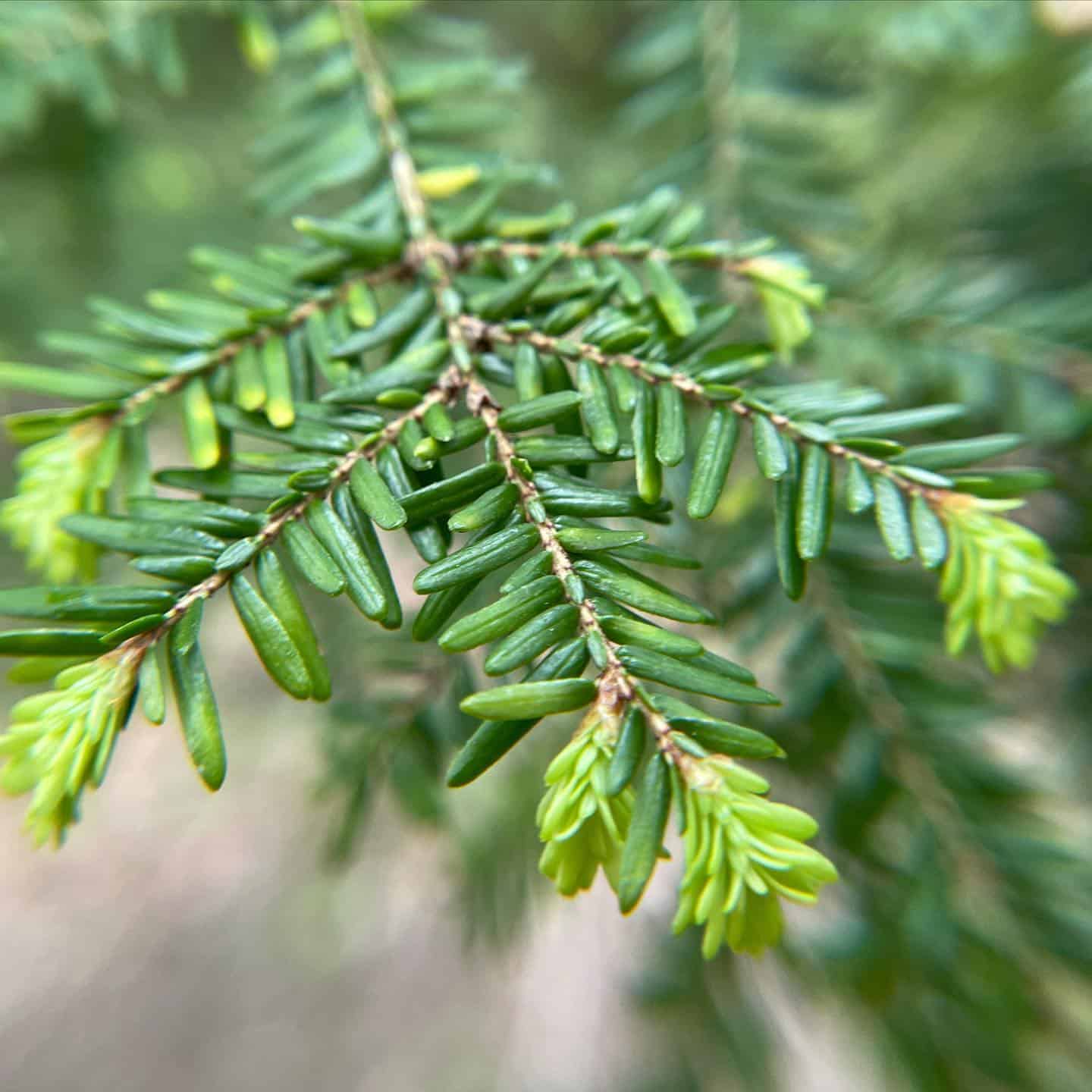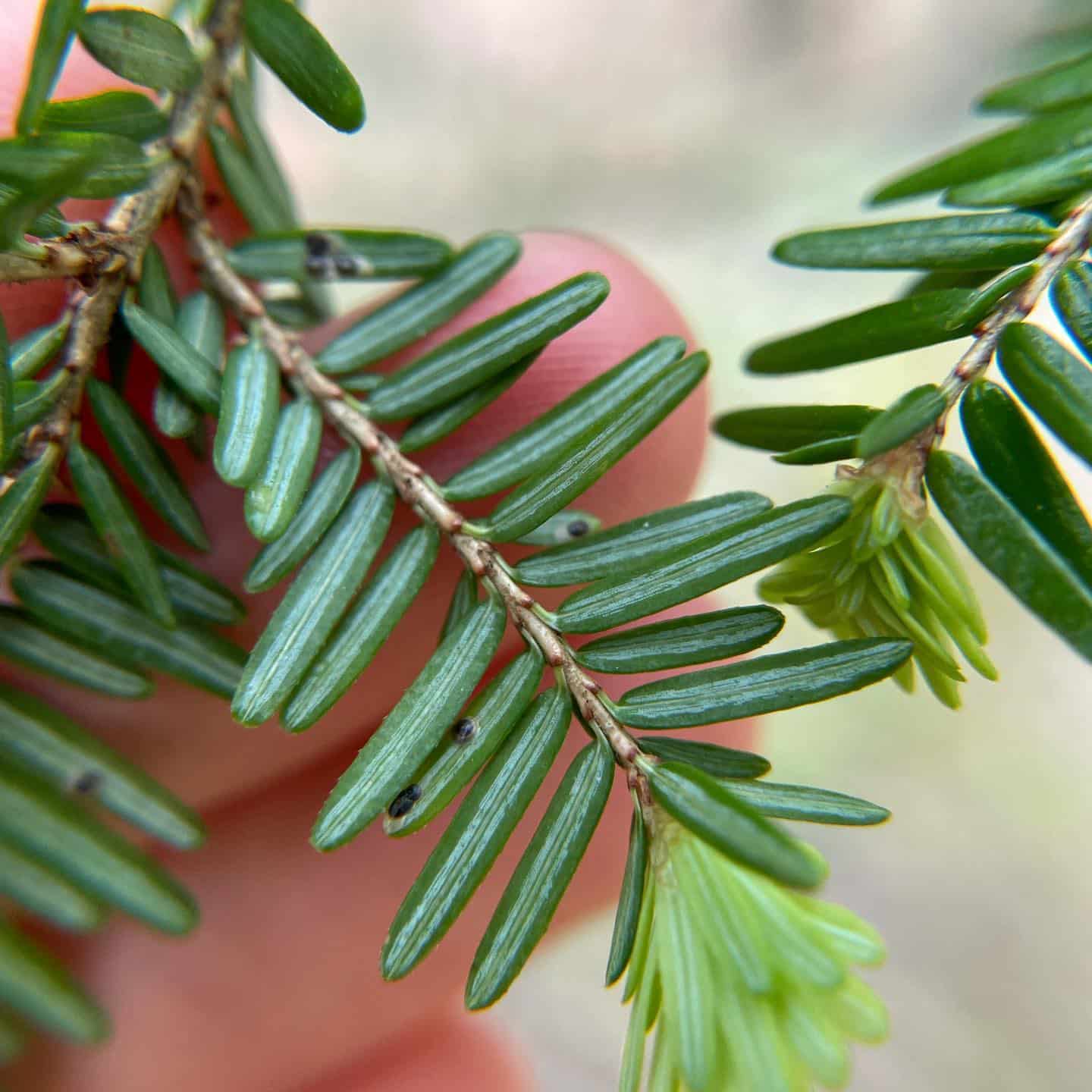Upcoming Events | Meet the Instructors | Plant Archive | Mushroom Archive
----------------
Eastern Hemlock Trees (Tsuga canadensis) are native, common forest trees.

Eastern Hemlocks can be identified by their 1/2 inch long, flat needles that have white stripes on their underside. The stems also have miniature, often upside down needles that line the top of the branches. The cones are 3/4 inch long. The trees can grow to >100 feet tall.

It is important to differentiate Eastern Hemlock from the toxic Yew (Taxus spp.), which also has flat needles. Yew needles lack the white lines on their undersurface. Yews also lack cones and do not grow >20 feet tall.

Eastern Hemlock needles can be turned into a tea. Eastern Hemlock is also the tree that Hemlock Reishi (Ganoderma tsugae) can be found growing on in the spring. Eastern Hemlock tea can be included in a reishi double extraction to increase the mushroom’s medicinal potency. Eastern Hemlock has been used medicinally to boost the immune system since it is high in vitamin C, vitamin A, and flavonoids.
--
Written by Amy Demers, founder of the Connecticut Foraging Club. To learn more about foraging in Connecticut, check out our upcoming classes.






